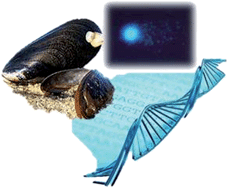DNA damage was evaluated in the haemolymph of Mytilus galloprovincialis from nine sites along the south coast of Portugal using the comet assay. DNA damage was low, in the same range of sites considered to suffer low impact from genotoxic contaminants. Even so, differences between sites, seasons and genders were found. Highest values were in mussels from the main estuaries and the fishery harbour, reflecting higher genotoxin levels, whereas the lowest values can be used as a baseline for future work. Non-contaminant related factors (e.g. temperature and oxygen) were also shown to influence DNA damage. Between seasons, highest values were in summer related not only to the increase of tourism in this region (∼10-fold), but also to temperature. Between genders, males were found to be more sensitive. The condition index was also generally higher in summer. Lipid peroxidation, another damage biomarker, was measured in gills to assess if there is any association between the responses of both biomarkers and if they are similarly affected by the same environmental conditions. LPO like DNA damage was higher in summer. This work confirms that DNA damage is a sensitive biomarker to discriminate genotoxic contamination, even in areas considered to suffer low impact from genotoxins.

You have access to this article
 Please wait while we load your content...
Something went wrong. Try again?
Please wait while we load your content...
Something went wrong. Try again?


 Please wait while we load your content...
Please wait while we load your content...